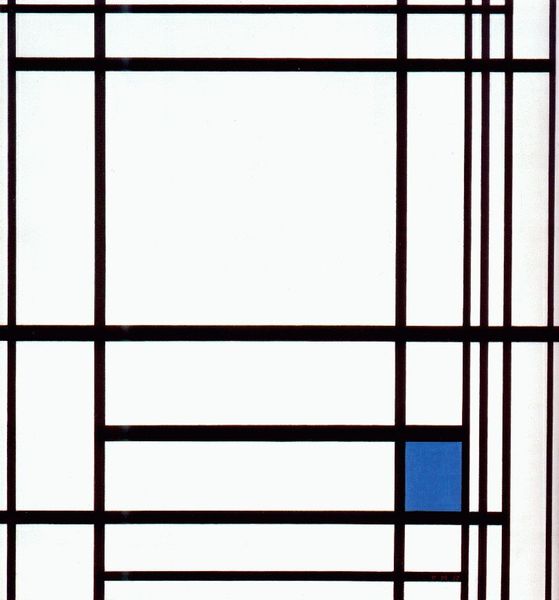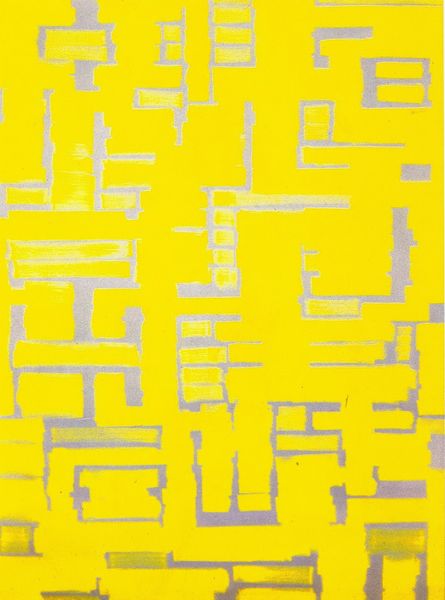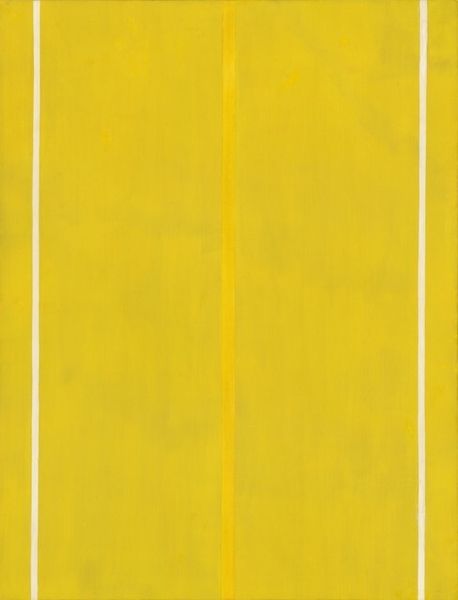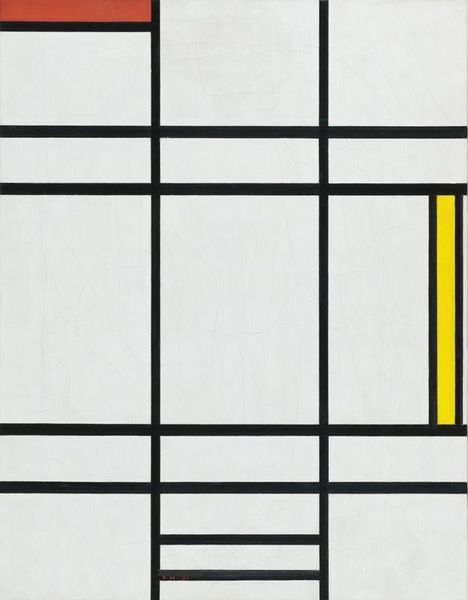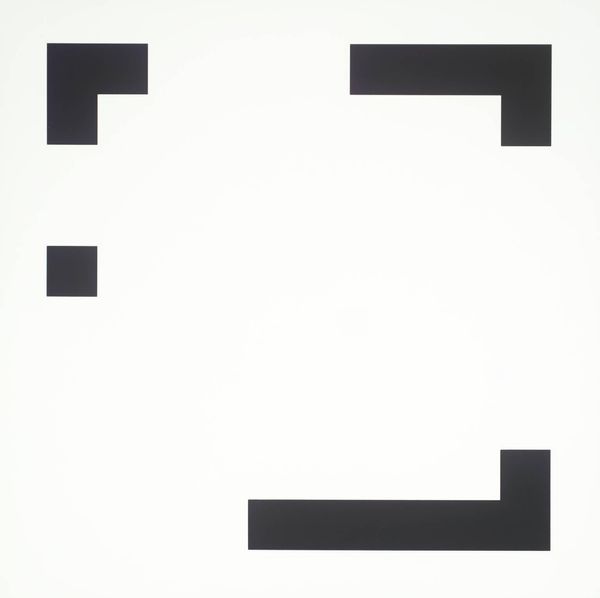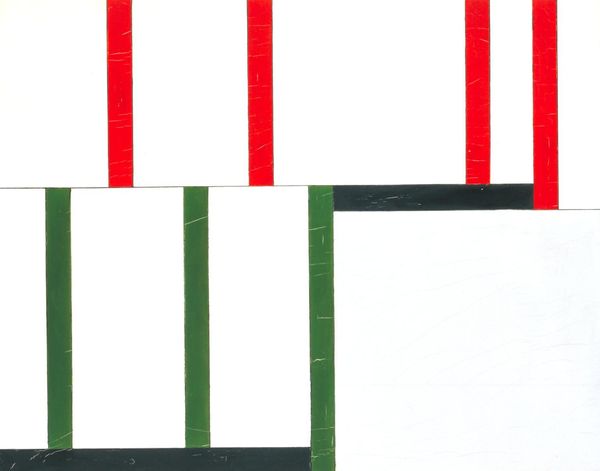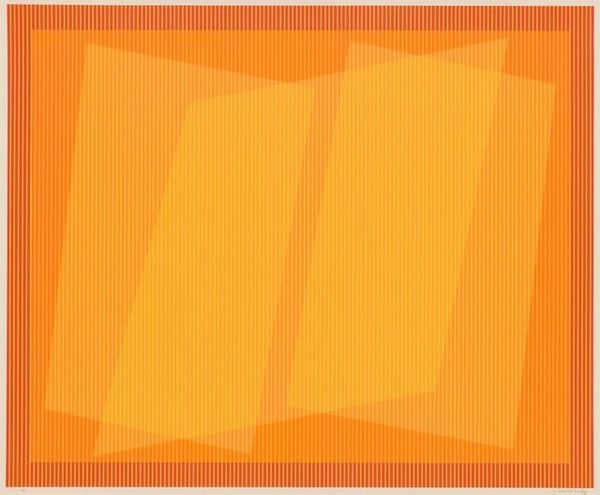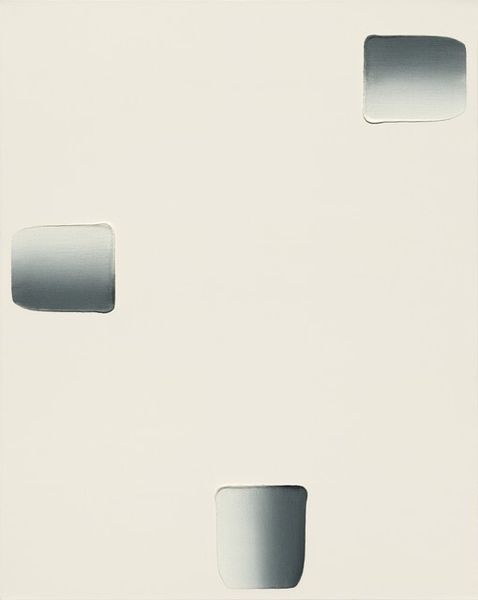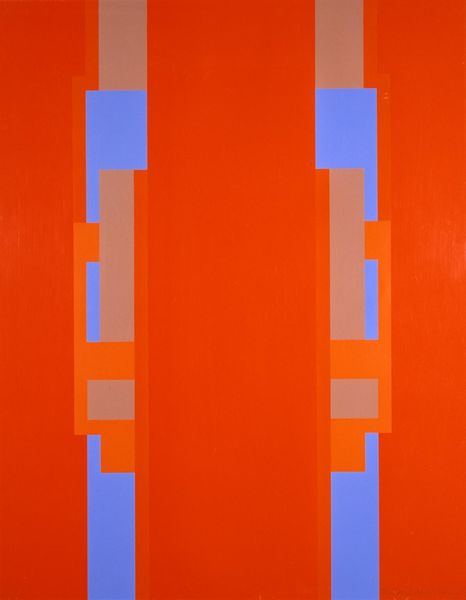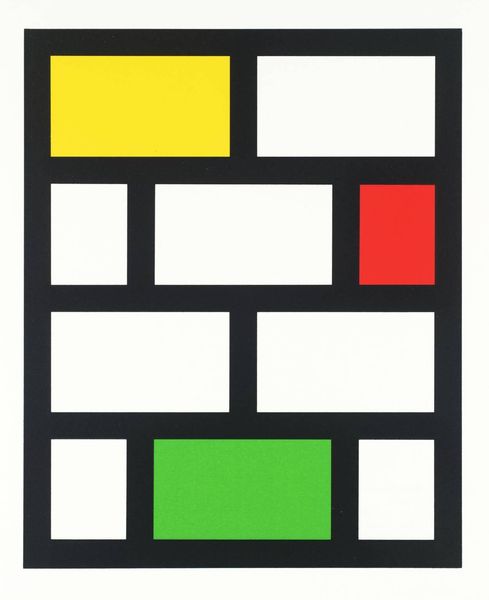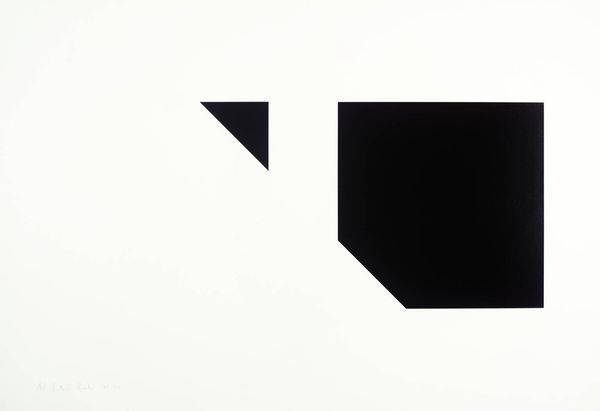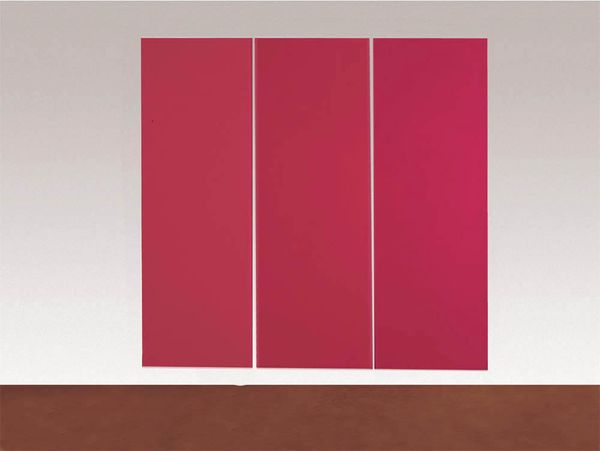
Copyright: Nicholas Krushenick,Fair Use
Curator: Here we have Nicholas Krushenick's "Wire Mill" from 1973, rendered in vivid acrylic. Editor: Immediately, I'm struck by how cheerful yet oddly sparse it feels. That intense orange against the hard lines creates a peculiar kind of tension. Curator: Krushenick was deeply invested in exploring the social implications of industrial design and mass production. The use of acrylic facilitated these very flat surfaces and clean lines that replicate commercial printing. The "Wire Mill" exemplifies how abstract forms can allude to the industrial landscape of the era. Editor: I see the influence, especially that unrelenting grid. It feels like a deconstructed cityscape viewed through a pixelated screen, like the soul of a factory distilled to its essence. There's almost a brutal honesty. Curator: Right, Krushenick engaged in what was called hard-edge painting. We also should keep in mind its association to Pop Art in the 1970s as this was at the core of his practice, making a painting in series that mirrors production culture and celebrates modern consumerism. Editor: It's interesting how those tight lines, for all their cold precision, dance playfully against the big swaths of saturated color. It's strangely joyous for something so... regimented. I would imagine the texture, how Krushenick applies acrylic so thickly and thinly that some areas have brushstroke sensitivity with raw linen showing while the bright bold sections can be completely devoid of emotion. Curator: Well put. The juxtaposition reflects his concerns regarding industrial and handmade quality and the ways in which these are consumed and assigned a specific class and value. In essence, "Wire Mill" invites reflection on what constitutes “authentic” value. Editor: Thinking about this interplay between machine-made and handmade… gives you something to mull over long after the initial visual jolt subsides. Curator: Indeed, and that interplay keeps revealing the layered complexity that can emerge from such seemingly basic methods.
Comments
No comments
Be the first to comment and join the conversation on the ultimate creative platform.

